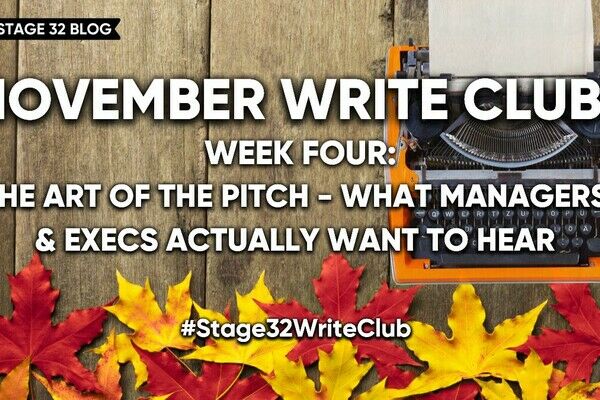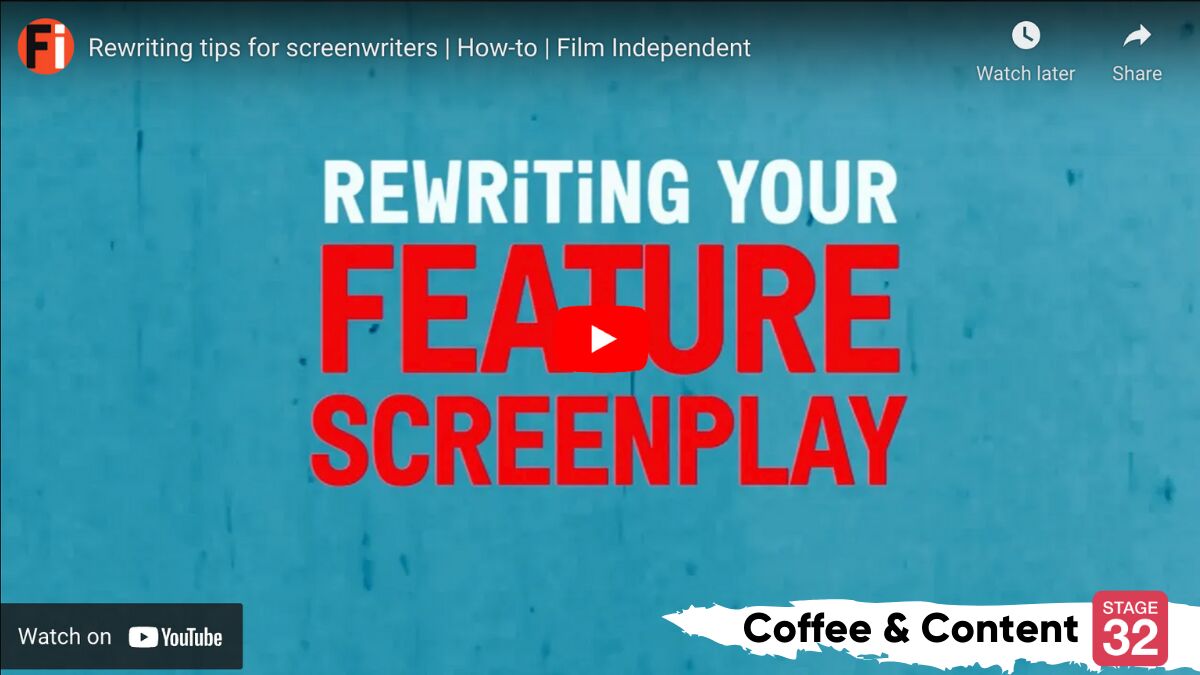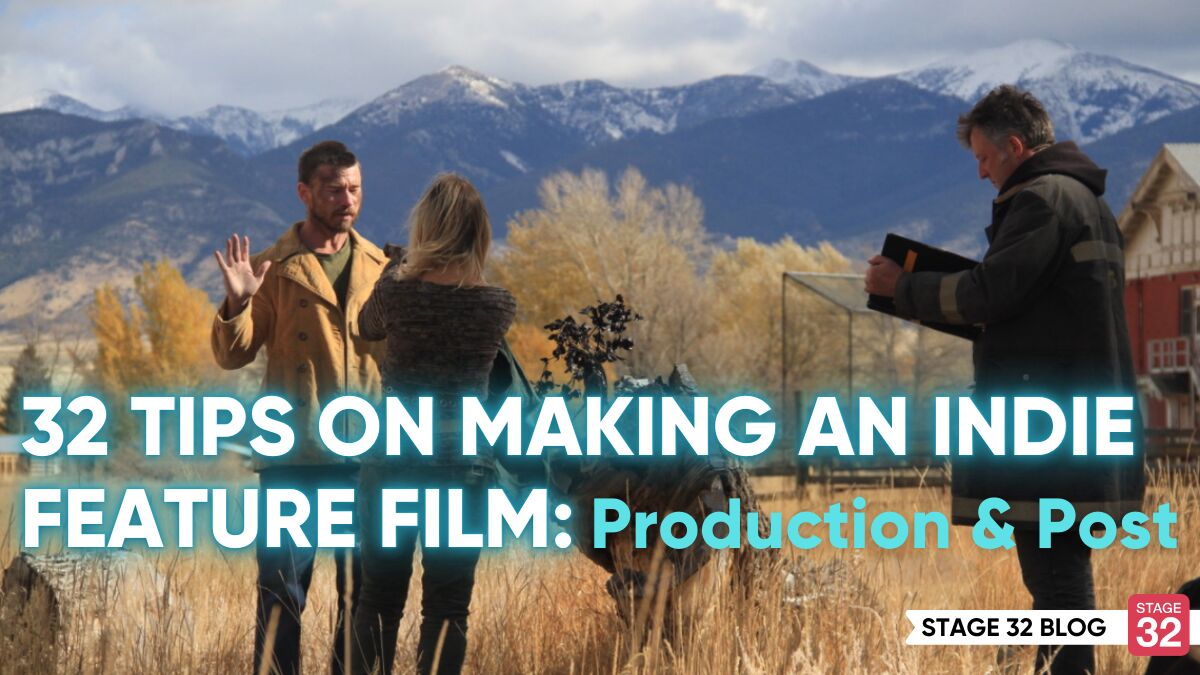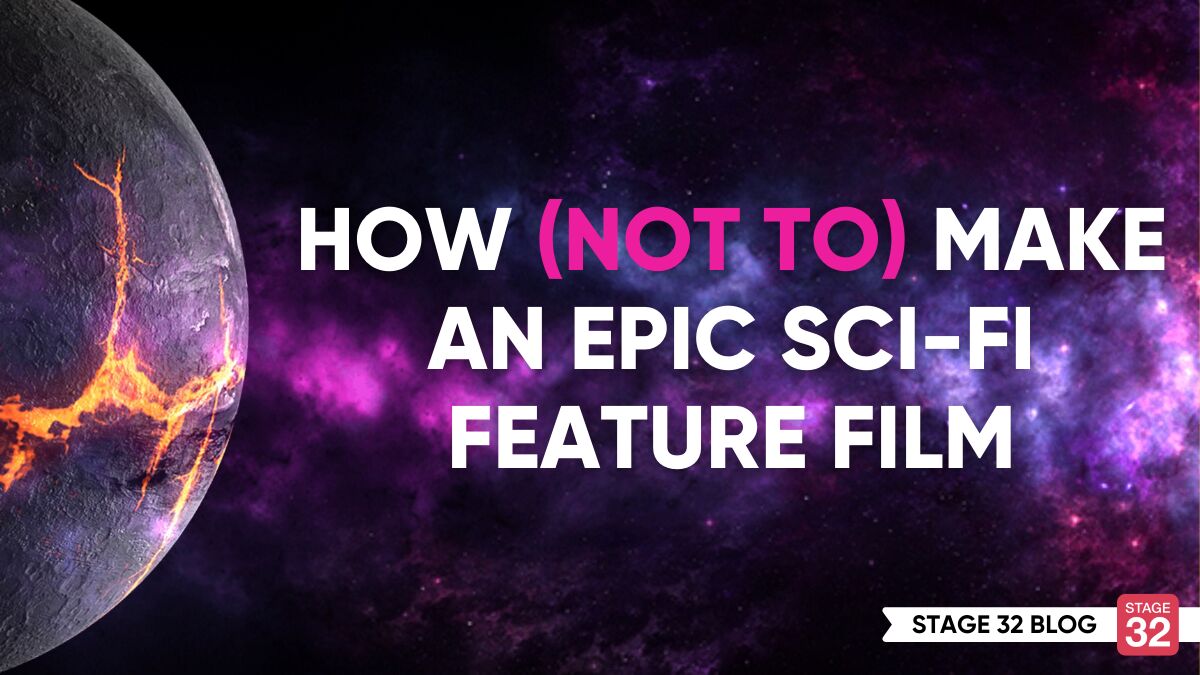How (Not to) Make an Epic Sci-Fi Feature Film
I remember seeing the van speeding toward my vehicle. When it struck, the impact sent a shudder through my nerves. Fortunately, I had enough sense to lean away from the window, so my head didn’t smash through the glass but only slammed into it with a mild “thud”. I was left with a bump on my head instead of a concussion, or worse. The car, sadly, did not fare as well: it was a write-off.
Later, I learned that a piece of the engine had been propelled through the bodywork and had missed me by inches. A road worker who had seen the whole thing ran over and told me not to worry - he had called an ambulance. I thanked him, and as I sat waiting for it to arrive, pondered on the irony that in a few hours I would be back on set directing… another car crash. This time it would be fake.

Behind the Scenes "Day of the Clones"
Lesson One: Look for the Positives
My journey began four months earlier. After our first feature – the vampire-in-social-care film “Boy #5” - wrapped and editing was completed, we had a problem. This was August, the middle of the UK’s pandemic. Cinemas had all shut due to Covid-19. Worse, offices were abandoned. So our progress on securing distribution hit a brick wall.
Fortunately, we had a solution! Thanks to the UK’s Covid Regulations, filmmaking was exempt. We had all our own equipment, and I still had some funds leftover from our last film, which I made for under $10,000. Why not use the time to make another film?
Then it hit me (no car this time). I had a script I’d been working on for a few years – a post apocalyptic sci-fi called “Day of the Clones”. And I had an idea about how to make it unique. I discussed it with our editor and we decided that it was indeed possible.
The script was designed for low budget filmmaking. It had a contained location, a very small cast, and a unique hook. Since my bustling home city of Manchester was now like a ghost town, I planned dozens of eerie shots involving a modern city centre devoid of people and traffic. It seemed a perfect opportunity, one that would never come again!
Make it so!
We began casting from our pool of extremely talented local actors. We also got a named actor from British TV. We secured a remote farmhouse, and through my family we borrowed an empty flat that would serve as the farmhouse interiors. Our third location was a pub owned by one of our actors. The pub, of course, was closed. We assembled a crew from those we had worked with in the past – a tight squad of just ten people. That would help manage the covid-19 risk. Come December, we were go!
We also put together a crowdfunding campaign – using my less than stellar computing skills – offering what I thought were pretty good perks in exchange for funding from the public. I publicized it extensively.
And this is when things started to go wrong.

The crowdfunder secured some funds – that we are eternally grateful for – but not enough. I had sold my house to pay for our first film. It was time to use the rest of those funds. I told myself it would be worth it. However, nothing concentrates the mind like spending your own money!
Or it would have... if we could have spent it. But mere days before we were to film, the government announced another total lockdown. All the stores closed. The only thing we could buy was food. Fortunately, I had just enough props and costume. But this meant we had no backups of anything. In fact quite a bit of the wardrobe that appears in the film is my own.
Days before filming was due to begin, we lost our AD and our DIT expert for various reasons. Minor problems, I told myself. We still had plenty of crew. And once the shooting date was set, it was too late to back out... the die was cast.
We were a go!
By now it was December… that meant winter. Cue the coldest four months of my entire life as we stood outside in sub-zero temperatures for hours on end, huddling around two electric heaters whenever we could. The farm was a nightmare of mud, horse manure and junk. Anything that touched the ground became mired in muck. Worse, in our indoor location, the heating broke down. As for the pub, it as an icebox. When the snows came, I honestly thought nobody would turn up for work.
The second day we were due to film on the farm (our main location) the owner texted us to say he had changed his mind. He pulled out with zero warning. Cut to me rescheduling till three a.m. In view of the weather, I saw this as a positive thing, because it meant I didn’t have to go there anymore. Cast and crew must have been just as relieved, because they actually turned up as well!
Lesson Two: it sucks to be the writer, director AND producer
Sadly, by now tensions had risen on set between some of the cast and crew. These spats had now become full-blown screaming matches. Perhaps it was the cold, or Covid, or the ridiculously long hours. But (for reasons I can’t go into) we had to negotiate a last minute change of plans that saw an actor’s part drastically rewritten. Cue yet more three a.m. rewrites after a full day of filming.
The next day, we lost three more members of crew. The atmosphere on set was not pleasant.
Cue several more midnight conferences between myself and my co-producer as we desperately tried to put the wheel back on. Also cue more three a.m. rewrites by yours truly. And more rescheduling.

Behind the Scenes "Day of the Clones"
But we were still rolling. Sheer idiocy stopped me from calling it a day. Because I knew that if we stopped filming, we would never start again. We had to keep going, no matter what.
We also didn’t know what was going to happen with Covid. Would the law change and stop us filming altogether? We reminded ourselves that we would never get another opportunity like this– a full city solely at our disposal! And my co-producer had my back. Together, we were an unstoppable team.
Lesson Three: Keep telling Yourself – you are an Unstoppable Team!
Yeah, that whole unstoppable team thing? Turns out my co-producer’s wife was heavily pregnant and didn’t know it. So pregnant, in fact, that she had her baby in the middle of the shoot. Fortunately, after hurried phone calls and much negotiating, we now had a replacement crew. We kept going, and the actors’ kept the faith with us. We were back on track!
The next week we lost an entire day’s filming.
SD cards are the bane of my life. And incorrectly formatted SD cards that decide to malfunction only at the very end of a day’s shooting are the bane of that bane. Luckily, we didn’t lose anything irreplaceable. So we did what anyone would. We lied about it. Sorry, cast and crew if you’re hearing about this for the first time! (Now all those reshoots make sense, eh?)

Behind the Scenes "Day of the Clones"
Lesson Four: Animals Don’t take Direction
We now prepared to film one of our showcase set pieces – a horse in the middle of the city that gets lost during the apocalypse. We smuggled the animal into town on a trailer, closed off the streets (we had no authority to do this, by the way) and identified a back street where our horse could roam with importunity.
Unfortunately, due to a lack of communication with our new cameraman, we did not get exactly what we wanted. We checked the footage and were not impressed. The answer was simple: reshoots!
We rang the horse’s owner to be told the horse had died.
Sadly, it had become the victim of a thoughtless passers-by, who fed it a whole potato, not realizing that horses are only supposed to eat horse food. He has since become the subject of an international campaign to educate people about the dangers of feeding farm animals. So if you see a horse in a field, please don’t feed it.
We picked ourselves up and moved on, knowing that at least we had some footage.
Lesson Five: Choose Good Partners
If you like sleep, do not become a director. After a solid month of filming (even between Christmas and New Year) I discovered that apparently the human body can get through on three hours of sleep a night.
But by now we had no possibility of reshoots due to departed actors and horses, it was still freezing cold, we had rewritten the entire third act of the screenplay, lost our co-producer (and main cinematographer) and now had the prospect of doing all the special effects and stunt sequences with only a skeleton cast and crew.
At this point I began to question my own sanity.

My family were saying things like: “If it’s that difficult maybe you should just quit.” One day I sat eating my microwaved meal in our empty pub, shivering with cold, knowing that we had less than five hours of daylight per day, and that we were about to embark on the most difficult part of the movie. I began to wonder if they were right. I had only spent around £10,000 so far. Maybe I should quit while I was ahead.
Then my co-producer came back, his fatherly duties reduced so that he could spend a few days a week on set again. We talked it over and decided to keep going. The footage was looking good, he assured me. Now it was his turn to give me a pep talk!
This is not a business for the faint of heart. Sometimes you have to fake confidence even if you’re dying inside. Filmmaking is a people business. I say this as someone who absolutely hates networking. You can’t make a film alone. This is why you must surround yourself with positive, enthusiastic people who can help make your dream a reality. A set can be a pressure-cooker of stress and tension – every minute wasted is a loss of time, money and more importantly, light. A negative person with no enthusiasm can bring everyone down. They can literally halt a production. Thankfully, my co-producer was on hand to pick me up in my hour of need. So I sucked up my soul-crushing sense of impending doom and just got on with it.
Lesson Six: Improvise, improvise, improvise!
We learned early on: ask for forgiveness, not permission. Now I wouldn’t advise anyone to break the law. But if you wait for permits and documentation you will wait forever. Although we always did risk assessments, we did numerous things we really shouldn’t have done. However, we always got police clearance when filming with guns, figuring that a dead actor is worth nothing to anybody.
It also helps that I worked in the emergency services for twelve years and my co-producer was a nightclub bouncer. So between us, we could handle the irate locals screaming at us because we were filming with guns in busy streets, or the crowds of street kids harassing our cameraman during a roadblock scene on a council estate. We got our shots of the city skyline at the same time that a security guard was trying to throw us off the roof of a multi-storey car park. And one of our proudest achievements came in a shopping mall where we did a “flash mob” of dead bodies before the security guards even knew what was going on.

All the challenges now were technical. How were we supposed to film a major battle in a post-apocalyptic wasteland in the back yard of a pub?
The way we filmed these SFX scenes is about as far removed from Hollywood as you can imagine. We used a smoke machine with straws, a DIY squib made from a lawn sprayer and plastic tubing. We used a flashing bicycle light and some homemade lights for electricity sparking inside a robot. Our robot’s head was a Paper Mache mask that kept melting – we only got about one hour out of it before it went completely soggy – and we had to constantly make new ones. I will spare the blushes of one of our actresses about where she had to stick her head in order to keep the robot upright on camera.
Sometimes I still get cold shivers at the memory of the hours I spent building the miniature helicopter that appears in glorious full-size at the end of our film. It has given me a hatred of plastic model kits – the parts were microscopic, and it kept constantly breaking whenever it was touched. To give you an idea of my mental state, I went into work one morning after slicing my finger open while making it. An actress looked at me funnily and pointed out that I had put a bandage on the wrong finger.
Sometimes our efforts fell flat - spraying blood is almost invisible at night, and the never ending traffic was a nightmare both for sound and when trying to film post-apocalyptic scenes (in one shot a bus parked up in front of our actors for ten minutes). We had to ADR a section of the film so there would be no honking car horns or car stereos in our post-apocalyptic future. We may have also accidentally showered a passer-by in fake blood when our homemade squib device malfunctioned and sent blood jetting over a ten foot high wall… sorry, blood-soaked guy.
There were plenty more mishaps that I can’t go into here for lack of space or the certainty of legal action.

Screen grab from "Day of the Clones"
Lesson Seven: Keep going!
By now we were running solely on a mixture of dogged determination and stupidity. Come February, we had exhausted three makeup artists. Not to worry, one of our actors could do makeup! No AD? Don’t worry, the director will just run around like a loopy headless chicken. Everyone got a turn at playing the robot behind his mask, operating the squib machine, clapping, and recording continuity. We were on our fifth camera operator, our second robot, our third electric heater, our second tent, our second microphone, our replacement car, our second microwave oven…
Still we kept going.
Finally, after 32 days of filming, we wrapped. The next week the UK plunged into a heatwave. It was one of the warmest spring days on record. It felt like the weather was laughing at us.
I now sit here, older but perhaps not wiser, watching the film as it is edited. In many ways, this is the most challenging part. But we have a terrific editor who can interpret even my scrawled notes.
I have probably lost about five years off my life. But there are many things to be thankful for: the magpie we found eating a dead rat; the day we woke to find dense fog had covered everything, lending the scenes a fantastic dreamlike quality; the day snow fell; the abandoned city centre buildings we found with eerie vegetation growing out of them; our fabulous prosthetic fake leg injury (until an accident destroyed it); some genuinely emotional moments from our actors; and of course, we still have our most impressive visual effect, which we accomplished using a 20 foot long green screen.
“Day of the Clones” shows an impossible side to a city I have grown up in. It gives me an immense feeling of pride. We made a sci-fi feature film during a pandemic lockdown! As my co-producer said: what else would we have been doing?
Have I learned anything? Sure, loads about filmmaking. But have I learned anything about life? Probably not, except that you have to keep going, no matter what. And don’t let anyone tell you it can’t be done. The world needs more films. Sure, a healthy dose of insanity helps. Honestly, I hope never to go through anything as grueling again. But I would if I had to. I think we have something unique here, and in that sense alone it was worth it.
About Eric Ian Steele

Eric Ian Steele is the writer of the thriller feature film “The Student” (2017), currently on Netflix in the USA, and the sci-fi action feature film "Clone Hunter" (2012). He has written for a children’s sci-fi TV show in the UK and was hired to adapt several cult novels for the screen. He is also a published novelist. He has just finished directing a vampire feature film which he also wrote that is set in the world of social care in his home town of Manchester, England, titled “Boy #5”.
Previous Stage 32 Blogs by Eric:
How I made a Feature Film for Under $9,000
How to Make a Short Film Over Zoom
Let's hear your thoughts in the comments below!
Got an idea for a post? Or have you collaborated with Stage 32 members to create a project? We'd love to hear about it. Email Taylor at taylor@stage32.com and let's get your post published!
Please help support your fellow Stage 32ers by sharing this on social. Check out the social media buttons at the top to share on Instagram @stage32 Twitter @stage32 Facebook @stage32 and LinkedIn @stage-32
| Coffee & Content: Rewriting Tips for Screenwriters & How to Light for Genre |
| 32 Tips on Making an Indie Feature Film: Production & Post |
Search Stage 32 Blog
There are now 4034 blog posts for you to enjoy. Search them all by tags below.
Acting, Advice, Cinematography, Coffee & Content, Composing, Contests, Distribution, Featured, Filmmaking, Financing, Inspirational, Networking, Producing, Screenwriting, Success Stories, Tips, Trending,Relevant Tags
Recommended Articles

November Write Club Week #3: How To Make A Strong First Impression When Meeting Execs, Producers, & Reps

The Stage 32 Community Open House Returns This November — and You’re Invited!

4 Reasons To Have Audio Description On Your Film

A Practical Guide for Actors: Tips & Advice Every Performer Should Know

Forbes Spotlights Stage 32 Certification!

Stage 32 + Mark Creative Management Partner For Exclusive Opportunity for Writers to Land Representation!
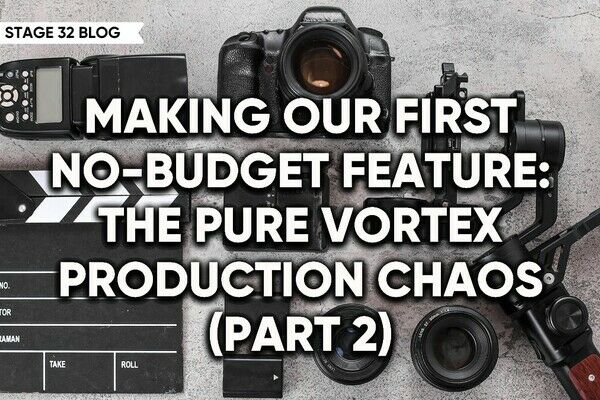
Making Our First No-Budget Feature: The Pure Vortex Production Chaos (Part 2)

Insider Intel: 2026 Predictions

Stage 32 Featured at the 43rd Torino Film Festival!
